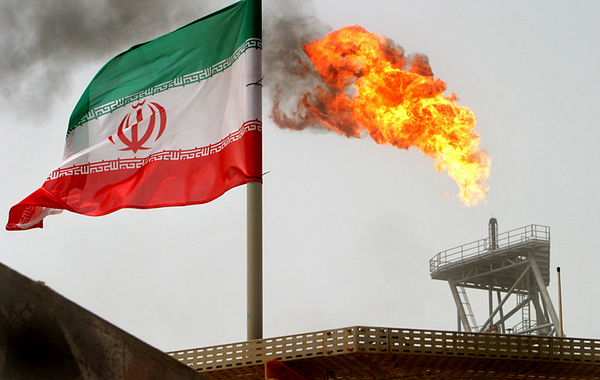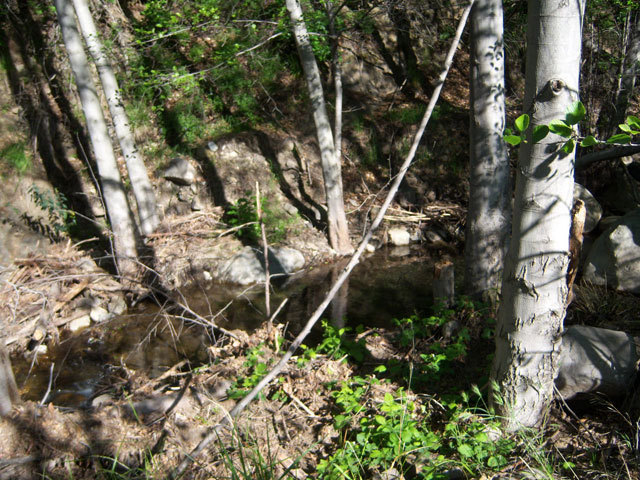Page added on October 16, 2016
Can oil bridge ties between Iran and the West?

Iran’s oil ministry announced it will accept applications from foreign oil companies roughly a week after the US Treasury Department lifted more sanctions against Tehran.
Iran has once again reminded the world it is open for business.
The country’s oil ministry will accept applications from foreign companies starting Monday for the exploration and production of its oil and gas fields, some of the largest in the world. The announcement, which comes less than a year after the United Nations lifted its nuclear-related sanctions on the country, is part of its ambitions to attract more than $150 billion in investments to increase its oil production by 1 million barrels to start the next decade.
The report published Sunday on SHANA, the ministry’s news agency, is Tehran’s attempt to revive the industry, which, like much of its economy, hasn’t experienced the resurgence it expected following the end of some international sanctions under the nuclear deal. Even though Iran’s economy is more diversified than those of other oil-producing Middle Eastern countries, its oil and gas industry is a litmus test for the country’s ability to improve ties with the West in lieu of its present dependence on China.
“China has done enough investment in Iran,” Mansour Moazami, chair of the Industrial Development and Renovation Organization of Iran, and the former deputy oil minister, told Bloomberg. “We will produce opportunities and chances for others.”
The state-run National Iranian Oil Company (NIOC) has invited “qualified and reputable” oil companies to apply for upstream oil and gas projects, the announcement reads on the SHANA website. The ministry did not state how many projects would be involved.
Iran previously said that priority for exploration and production for foreign companies would be given to bordering countries with which it shares oilfields. Iran has 28 joint offshore and onshore gas and oilfields with countries that include Iraq, Kuwait, Saudi Arabia (Iran’s bitter rival), Qatar, the United Arab Emirates, Pakistan, Afghanistan, and Turkmenistan, according to a map published in February by the an oil and gas market researcher Drillinginfo.
Iran’s petroleum history dates back to the 1908, with the first discovery of crude oil in the southwest part of the country. Today, Iran is the third largest OPEC producer, and boasts of the fourth-largest oil reserves in the world, and second-largest gas reserves. Oil production accounts for 23 percent of Iranian wealth.
Its current arrangement with foreign investors started following the 1979 Revolution. The National Iranian Oil Company started to offer buyback contracts to foreign oil companies, noted Drillinginfo. To develop an oil or gas field, a foreign company must invest its own capital and expertise. Tehran will pay back the company from revenue from sales.
The latest iteration of this system attracted billions of dollars in foreign investments in the 1990s and early 2000s. But investments dried up when the US and European Union slapped heavy sanctions on Iran staring in 2011. This opened up opportunities for China.
China has become Iran’s main investor and trade partner, according to Bloomberg. Before sanctions, China traded half as much with Iran as the EU. In 2014, it traded five times as much with Iran as the EU did, although this number has declined since then because of falling oil prices.
While China wants to expand this, Iranian President Hassan Rouhani wants to rebuild investment ties with other parts of the world.
But the influx in money many Iranians have awaited following the end of sanctions under the nuclear deal has been slow. The economy hasn’t received a boost, writes the Harvard Business Review. And many big banks that left the country have not returned.
Some Iranian officials blame the US. They argue that while the US and world powers lifted many international sanctions on Iran under the nuclear deal, other US sanctions continue to curb Iranian business prospects, according to The Wall Street Journal.
Although Republicans and some Democrats have fought the Obama administration’s efforts to ease its stance on Iran, the US Treasury Department announced Oct. 8 the easing of some sanctions. The Treasury said Iran can now gain access to dollars through non-US banks and institutions, although it is still not allowed to have direct contact with the US financial system. US-sanctioned Iranian entities can also be part of projects as long as they aren’t the controlling shareholder.
The Iranian announcement about foreign oil investment comes just over a week after the Treasury’s easing of sanctions, which is expected to attract foreign investment, according to The Wall Street Journal.
But US sanctions on Iranian terrorism and human rights will continue, as well as lingering uncertainty inherent to Iran’s “opaque political system,” wrote The Christian Science Monitor’s Scott Peterson wrote in 2015.
As Mr. Peterson put it, Iran is a high-risk, high-reward market.
The business environment “remains a minefield,” Charles Hollis, the managing director of FTI Consulting, a Washington-based advisory group, told Peterson. “So the first piece of advice is: Understand sanctions, and abide by them.”
7 Comments on "Can oil bridge ties between Iran and the West?"


rockman on Mon, 17th Oct 2016 11:24 am
Given the surrogate conflict in Yemen it would be risky for a company, especially a US company, to have very much capital tied up in Iran. Which is why China has been the big Iran partner in the past. But I suspect Iran very much wants some competition so the Chinese don’t have a lock on future projects.
Boat on Mon, 17th Oct 2016 9:15 pm
Iran has no problem asking for investment and tech. Then again they love to gather in large groups, jump up and down chanting death to something or another. An educated society wanting to attract business may want to work on their social skills.
GregT on Tue, 18th Oct 2016 12:46 am
“Then again they love to gather in large groups, jump up and down chanting death to something or another. An educated society wanting to attract business may want to work on their social skills.”
As per usual Boat, you’re living in la la land. Not a fucking clue……..
Country vs country: Iran and United States compared: Crime stats
http://www.nationmaster.com/country-info/compare/Iran/United-States/Crime
Dredd on Tue, 18th Oct 2016 10:18 am
Only after peak death (see video here).
Truth Has A Liberal Bias on Tue, 18th Oct 2016 3:09 pm
Lol an American complaining about uneducated societies fuuuuuck now I’ve heard it all. What a fucking retard! ‘Merika has to be the biggest bunch of dumbfucks on the planet.
Boat on Tue, 18th Oct 2016 3:41 pm
greggiet,
Crime stats? In Iran? Lol
Truthless,
Who is complaining. Btw Iran is considered highly educated. Try google.
GregT on Tue, 18th Oct 2016 9:36 pm
“Btw Iran is considered highly educated. Try google.”
How about trying a source that doesn’t originate in the US of A.
http://www.nationmaster.com/country-info/compare/Iran/United-States/Education
SOURCES: UNESCO Institute for Statistics; UNESCO Institute for Statistics. Population figures from World Bank: (1) United Nations Population Division. World Population Prospects, (2) United Nations Statistical Division. Population and Vital Statistics Report (various years), (3) Census reports and other statistical publications from national statistical offices, (4) Eurostat: Demographic Statistics, (5) Secretariat of the Pacific Community: Statistics and Demography Programme, and (6) U.S. Census Bureau: International Database.; United Nations Statistics Division. Source tables; UNESCO Institute for Statistics. Source tables; UNESCO Institute for Statistics. Source tables; UNESCO Institute for Statistics. Source tables; CIA World Factbooks 18 December 2003 to 28 March 2011; UNESCO Institute for Statistics. Population figures from World Bank: (1) United Nations Population Division. World Population Prospects, (2) United Nations Statistical Division. Population and Vital Statistics Report (various years), (3) Census reports and other statistical publications from national statistical offices, (4) Eurostat: Demographic Statistics, (5) Secretariat of the Pacific Community: Statistics and Demography Programme, and (6) U.S. Census Bureau: International Database.; World Development Indicators database; UNESCO Institute for Statistics. Source tables; Source: UNESCO UIS Data | UNESCO Institute for Statistics; UNESCO Institute for Statistics. Source tables; UNESCO Institute for Statistics. Source tables; UNESCO Institute for Statistics. Source tables; UNESCO Institute for Statistics. Source tables; UNESCO Institute for Statistics. Source tables; UNESCO Institute for Statistics. Source tables; UNESCO Institute for Statistics. Source tables; United Nations Development Programme. Source tables; UNESCO Institute for Statistics. Source tables; UNESCO Institute for Statistics. Source tables; United Nations Statistics Division. Source tables; UNESCO Institute for Statistics. Source tables; World Bank national accounts data. Population figures from World Bank: (1) United Nations Population Division. World Population Prospects, (2) United Nations Statistical Division. Population and Vital Statistics Report (various years), (3) Census reports and other statistical publications from national statistical offices, (4) Eurostat: Demographic Statistics, (5) Secretariat of the Pacific Community: Statistics and Demography Programme, and (6) U.S. Census Bureau: International Database.; UNESCO Institute for Statistics. Source tables; UNESCO Institute for Statistics. Source tables; UNESCO Institute for Statistics. Source tables; United Nations Statistics Division. Source tables; All CIA World Factbooks 18 December 2003 to 18 December 2008; UNESCO Institute for Statistics. Source tables; UNESCO Institute for Statistics. Source tables. Population figures from World Bank: (1) United Nations Population Division. World Population Prospects, (2) United Nations Statistical Division. Population and Vital Statistics Report (various years), (3) Census reports and other statistical publications from national statistical offices, (4) Eurostat: Demographic Statistics, (5) Secretariat of the Pacific Community: Statistics and Demography Programme, and (6) U.S. Census Bureau: International Database.; UNESCO Institute for Statistics. Source tables; World Development Indicators database. Population figures from World Bank: (1) United Nations Population Division. World Population Prospects, (2) United Nations Statistical Division. Population and Vital Statistics Report (various years), (3) Census reports and other statistical publications from national statistical offices, (4) Eurostat: Demographic Statistics, (5) Secretariat of the Pacific Community: Statistics and Demography Programme, and (6) U.S. Census Bureau: International Database.; Source: UNESCO UIS Data | UNESCO Institute for Statistics. Population figures from World Bank: (1) United Nations Population Division. World Population Prospects, (2) United Nations Statistical Division. Population and Vital Statistics Report (various years), (3) Census reports and other statistical publications from national statistical offices, (4) Eurostat: Demographic Statistics, (5) Secretariat of the Pacific Community: Statistics and Demography Programme, and (6) U.S. Census Bureau: International Database.; “Efficiency and Equity in Schools around the World” by Eric A. Hanushek and Javier A. Luque, April 2002; Wikipedia: International Mathematical Olympiad; United Nations Educational, Scientific, and Cultural Organization (UNESCO) Institute for Statistics.; World Bank national accounts data. GDP figures sourced from World Bank national accounts data, and OECD National Accounts data files.; http://data.un.org/Data.aspx?d=UNESCO&f=series%3aEA_56_Ag25t99, Educational attainment: completed tertiary